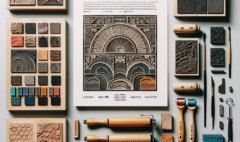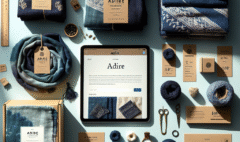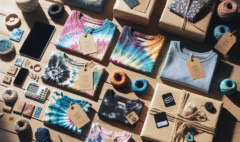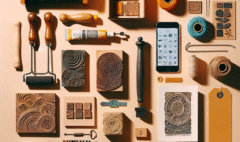How to Master Polymer Clay Earrings: Quick Step-by-Step Guide for Creative Success
How to Master Polymer Clay Earrings: Quick Step-by-Step Guide for Creative Success
How to Master Polymer Clay Earrings: Quick Step-by-Step Guide for Creative Success
Introduction: The Craft, The Appeal, The African Context
Polymer clay earrings satisfy a powerful human urge, to shape color and texture with our hands and to wear our stories close to the face. The material is forgiving, the tools are affordable, and the patterns can sing with the visual languages of the continent, from Ndebele geometry to Adinkra symbols and Swahili coast color palettes. If you enjoy beadwork, batik, or metal casting, you will find polymer clay both familiar and refreshingly immediate. No kilns. No foundry. Just careful conditioning, a home oven, and a steady eye for design.
A short human story anchors the point. In 1991, South African artist Esther Mahlangu painted bold Ndebele patterns on a BMW art car, translating a wall tradition into global design. Many modern jewelry makers have taken that cue, creating earrings that carry her crisp triangles and rhythmic lines into a smaller, intimate format. The lesson is clear, scale changes, meaning travels, craftsmanship remains.
Compared with beadwork or Kente weaving, polymer clay removes waiting time, you can bake in under an hour and finish the same day. Unlike metalsmithing, you need minimal safety gear and no torch. That immediacy is perfect for makers who want to prototype quickly, then refine steadily.
Materials and Tools You’ll Need
- Polymer clay: Premo or Soufflé by Sculpey, FIMO Professional by Staedtler
- Rolling gear: acrylic roller, optional pasta machine for conditioning and even sheets
- Cutting: tissue blade, craft knife, shape cutters, paper templates
- Surface: ceramic tile or glass, parchment paper, silicone baking mat
- Texture: fabric scraps, texture sheets, stamps, toothpicks, dotting tools
- Finishing: wet-dry sandpaper 400 to 2000 grit, micro-mesh pads, buffing cloth
- Hardware: earring posts or hooks, jump rings, pliers, strong two-part epoxy, hypoallergenic metals
- Other: oven thermometer, foil tent, isopropyl alcohol, baby wipes, cornstarch, small drill or pin vise, UV resin or water-based polyurethane if you want a glossy seal

Step 1: Preparing Materials
- Condition the clay. Warm it in your hands, then feed through a pasta machine from thick to thinner settings until it is pliable and streak-free. Proper conditioning prevents cracking.
- Plan a palette. Draw from living traditions, Maasai red with royal blue and white, indigo stories from Yoruba adire cloth, Tuareg silvery neutrals with a pop of desert gold. Mix colors gradually, note ratios, and keep swatches for consistency.
- Test bake. Every oven has a personality. Use a small scrap to confirm time and temperature, most brands recommend about 130 C or 275 F for 30 to 60 minutes depending on thickness. Always verify with an oven thermometer.
Step 2: Core Techniques or Methods
- Slab work. Roll an even sheet and build surface designs. Use stripes for Kente-inspired order, triangles and chevrons for Ndebele rhythm, circles for coastal bead motifs.
- Canes. Create patterned logs, slice them for repeated motifs. A Sankofa-inspired heart form can be simplified into a cane, though be respectful of meanings and contexts.
- Marbling and terrazzo. Mix leftover colors lightly for stone-like swirls, then inlay small chips for terrazzo. This echoes Shona stone sensibilities, organic and calm.
- Texture and inlay. Press a textured African wax print fabric into clay through a barrier film to protect the textile, then inlay contrasting clay into the impressions for crisp detail.
- Mica shift and metallic leaf. For ceremonial shine, use metallic clays or gold leaf, a nod to Akan goldweights and North African metalwork, used carefully and sparingly for balance.
Cultural note. Symbols like Gye Nyame or the Tuareg Cross carry histories. Learn their meanings before use, share that meaning with your buyer, and avoid trivializing sacred signs.
Step 3: Applying the Craft or Creating the Product
- Shape with intent. Cut arches, circles, shields, or elongated ovals. Consider how they hang beside the face. Echo natural forms, cowrie curves, seed pods, or the silhouette of a calabash.
- Plan the connection points. Pierce clean holes with a needle or straw before baking, align them so the dangle sits straight.
- Compose sets. Pair a bold statement piece with a quieter stud. Many African aesthetics balance energy and calm, busy kitenge alongside solid indigo, celebrate contrast.
- Add detail. Use silk screens or hand painting with acrylics after baking for Adinkra-like

stamps. Wipe back to reveal texture, keep lines honest and readable.
A historical thread to carry. Akan goldweights turned trade into small sculptures, each weight a proverb in metal. Your earring can carry a proverb too, small but resonant, if you design with meaning.
Step 4: Finishing, Drying, or Setting
- Bake safely. Place pieces on parchment on a tile for even heat. Tent with foil to avoid browning. Follow the brand’s temperature and time. Underbaking weakens clay, resist the urge to rush.
- Sand and buff. Start with 400 or 600 grit, move up to 1000, 1500, then 2000 for a satin sheen. Wet sanding keeps dust down and edges smooth on skin.
- Seal if needed. Many finishes are beautiful without varnish. If you want gloss, use a thin coat of UV resin or a water-based polyurethane. Test on a scrap to prevent clouding.
- Hardware matters. Set posts with two-part epoxy for durability. Use stainless steel, titanium, or gold-filled for sensitive ears. Close jump rings fully so nothing snags.
Creative Variations and Personalization
- Color stories. Build palettes from place, Kilimanjaro sunrise, Karoo dusk, Lagos nightlife neon on indigo. Tell your buyer the story on a small card.
- Mix materials. Pair clay with brass charms from local artisans, woven raffia, or recycled glass beads from Ghana, a respectful collaboration that deepens texture.
- Asymmetry. Wear a tale on one ear and an exclamation on the other. A Sankofa curve on the left, a simple circle on the right, balance through intention.
- Surface writing. Etch short proverbs in your language, keep them small and legible, a whisper of wisdom.
Turning Your Craft Into a Small Business or Gift Project
- Define your niche. Maybe you specialize in modern Ndebele geometry in earth tones, or coastal Swahili blues with shell forms. Tight focus builds recognition.
- Story first. Share the cultural reference and your connection to it. If it is your heritage, personal memory can be your compass. If you are inspired from outside, cite sources, seek feedback, and consider collaborating with culture bearers.
- Production rhythm. Work in batches, condition once, cut many. Cure, sand, and assemble in stations. Keep a simple spreadsheet for colors, bake times, and yields.
A contemporary snapshot. In many African cities, pop-up markets have become living galleries, from Johannesburg to Accra. Makers set out small stands, earrings catching the light, buyers listening to the stories behind each pair. The encounter is brief, the connection is real.
Tips for Pricing, Marketing, and Sharing Your Work
- Pricing formula. Materials plus labor plus overhead plus profit. For example, add up clay, resin, hardware, packaging. Add your hourly rate multiplied by time. Add overhead like tools and online fees. Add a fair profit margin. Review competitor prices on platforms like Afrikrea and Etsy to remain realistic without undervaluing.
- Photography. Natural light near a window,

neutral background, and skin tone inclusive models. Show scale on ear and on a palm.
- Marketing. Post process reels, color stories, and cultural notes. Use concise captions. Rotate between education, behind-the-scenes, and product drops.
- Sales channels. Test local craft markets, museum shops that focus on African design, and online platforms. Offer gift-ready packaging with a card explaining the motif.
- Care cards. Teach customers to store flat, avoid perfumes and high heat, and wipe with a soft cloth. Good care extends reputation.
Conclusion: Experiment, Respect, Enjoy
Polymer clay earrings are a canvas you can bake. They invite you to honor heritage, to prototype boldly, and to build a practice that fits a living room table and a life. Work with care, cite your inspirations, and keep refining your hand. Your next pair could be the one that makes a stranger stop and smile.
What story do you want your next earring to tell, and whose voice will you honor as you tell it?
Sources and Attributions
- Sculpey. Product baking and handling guidelines. sculpey.com
- Staedtler FIMO. Technical instructions for FIMO Professional. staedtler.com
- The Metropolitan Museum of Art. African art collection essays and object entries, including Akan goldweights and Adinkra. metmuseum.org
- Smithsonian National Museum of African Art. Collection resources and thematic essays on design, symbolism, and materials. africa.si.edu
- BMW Art Car Project. Esther Mahlangu, Ndebele painting on BMW 525i, 1991, official documentation. bmw-art-cars.com
- British Museum. Adinkra symbols and meanings, Ghana, collections and learning resources. britishmuseum.org
- The Art Institute of Chicago and additional museum resources on Tuareg jewelry forms and symbolism, selected collection entries. artic.edu










